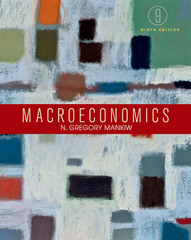A central bank has decided to adopt inflation targeting and is now debating whether to target 5
Question:
A central bank has decided to adopt inflation targeting and is now debating whether to target 5 percent inflation or zero inflation. The economy is described by the following Phillips curve:![]()
where u and π are the unemployment rate and inflation rate measured in percentage points.
The social cost of unemployment and inflation is described by the following loss function:![]()
The central bank would like this loss to be as small as possible.
a. If the central bank commits to targeting 5 percent inflation, what is expected inflation?
If the central bank follows through, what is the unemployment rate? What is the loss from inflation and unemployment?
b. If the central bank commits to targeting zero inflation, what is expected inflation? If the central bank follows through, what is the unemployment rate? What is the loss from inflation and unemployment?
c. Based on your answers to parts
(a) and (b), which inflation target would you recommend?
Why?
d. Suppose the central bank chooses to target zero inflation, and expected inflation is zero.
Suddenly, however, the central bank surprises people with 5 percent inflation. What is unemployment in this period of unexpected inflation? What is the loss from inflation and unemployment?
e. What problem does your answer to part (d)
illustrate?
Step by Step Answer:






